Satmap Active 10 Handheld GPS Map System Review
Satmap Active 10 Handheld GPS Map System
If you're fed up with carrying OS maps, then Satmap's Active 10 navigation device is certainly worth a look.
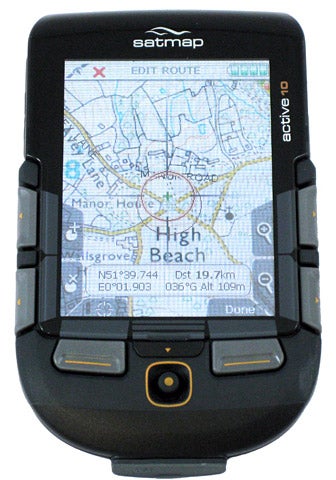
Verdict
It was arguably the recreational GPS that brought sat-nav technology to the mass market, many moons ago. First, yachtsmen saw the appeal of being able to pinpoint their position precisely on a chart, then hikers and outdoors enthusiasts wanted in on the act. But despite the commodity status that GPS technology has now achieved, there’s still not an incredibly wide choice of products for hikers and bikers.
Garmin and Magellan have dominated the market for years, and apart from the odd novelty act, there simply haven’t been that many others in the mix. Satmap, a small UK startup, is aiming to remedy that situation, however, with its Active 10 – the most innovative handheld GPS device I’ve come across in years.
If you’re a hiker or mountain biker, you’ll know that if you take nothing else out on the trail with you, you take an Ordnance Survey map and a compass. These wedges of folded paper describe the paths, roads, boundaries and physical features of the British countryside in incredible detail and that, like a road atlas for a driver, makes them indispensible.
But using them with most outdoor GPS devices is a pain. You have to first read off your grid coordinates from the device and then use those to work out your position on paper. The Satmap Active 10 takes these maps, digitises them, and makes them available on the screen of a rugged PDA. And, just like an in-car sat-nav, the Active 10 displays your position live on a 1:50,000 or 1:25,000 OS map so you know exactly where you are, instantly. If you’ve ever been lost on a hillside in the fading light, you’ll know how valuable this can be.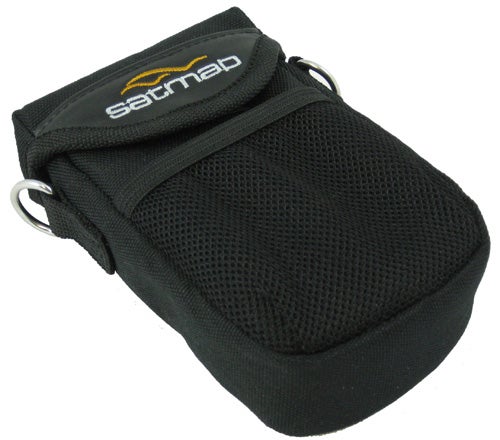
Of course other devices, from the likes of Garmin and Magellan, do offer topographic mapping on their devices, but they’re cut down maps; the Active 10’s maps appear exactly as they do in paper format, and the familiarity this brings makes it incredibly easy to use.
It’s not all about the maps, however, because the Active 10 is a pretty impressive piece of kit in itself. It’s built around a fairly bog-standard 240 x 320 resolution colour LCD screen, like many a modern PDA phone, but elsewhere it’s anything but stock. The chassis is constructed from tough, rugged-feeling plastic. The screen is protected by a thick, clear and replaceable covering. The buttons have been made large enough to be operated while using gloves. And the whole thing is weather-proof with all slots, ports and compartments sealed with rubber flaps. It’s not quite on a par with Nomad’s industrial-strength PDAs, but it does mean you can use the device in a downpour or carry it in a soaking wet pocket without worrying whether it’ll work or not when you need it most.
Power is drawn from three AA batteries (three lithium cells are provided with the unit) – another thoughtful feature as it means that extra juice should be readily available wherever you find yourself. You can use the Active 10 with a rechargeable lithium ion battery, if you wish, and it will charge in the battery bay, but this is an optional extra (£45). You do get a rugged-feeling nylon pouch and neck strap in the box, but the bike mount, is also extra.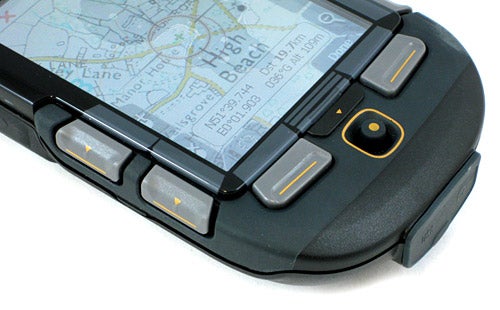
The custom operating system on the device is incredibly well-designed. The sheer detail of the maps means that planning routes is slick and simple: you simply tell it to create a new route, then pan and zoom on the map using the device’s mini joystick until you find where you want to start. Then it’s a matter of clicking the stick to set your first waypoint, and further waypoints are added in exactly the same way. Six buttons around the bottom half of the device provide shortcuts to useful functions such as zoom in/out and delete waypoint, while a small box at the bottom of the screen displays important information such as position, altitude and total route distance.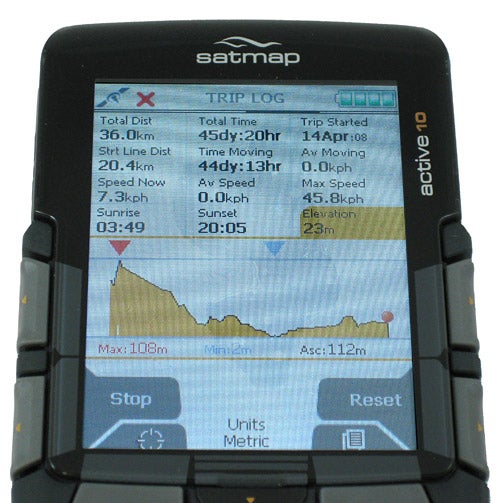
The six buttons don’t always perform this set of functions, however: they’re essentially soft buttons, performing different tasks depending on which screen you happen to be in. It’s a system that takes some getting used to, but after a short while, you’ll be wondering why other manufacturers don’t employ similar systems.
There’s also a wealth of other features on offer too. The Active 10 will track your walks and rides if you can’t be bothered to plan them out waypoint-by-waypoint – and it will then allow you to convert these tracks into routes for export. The level of detail available for trip analysis is astonishing. At the end of a walking or riding route as well as recording your position, the device logs your altitude over time, displaying it as a graphical, side-on profile, as well as your total distance, time moving, average speed, maximum speed and so on, all on one informative page.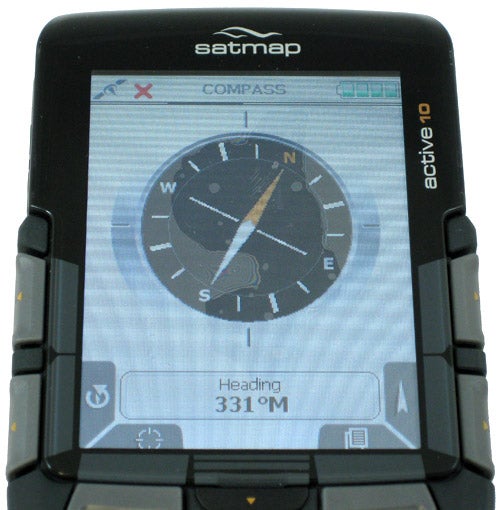
And not only does the Active 10 have a SiRF Star III GPS receiver on board, but it also has a digital compass built in that enables you to get a heading even when you’re stood stock still. With most other GPS devices, you have to be moving before an accurate bearing can be taken, but more useful than the convenience is the fact that as you swivel on the spot, the map on-screen moves with you, allowing you to relate features on the landscape to features on the map quickly and easily.
There are, of course, some problems with the Active 10: the screen is a mite too reflective for my liking, requiring the use of cupped hands and hunched shoulders in bright conditions, and the GPS receiver can take an age to lock onto enough satellites to provide usable co-ordinates. I measured it at six minutes once(!) but more often than not it varied between one and three. Those buttons are quite stiff and require a fair bit of getting used to, while panning and zooming around the map is sluggish at some zoom levels. The device is quite bulky, too, at 130 x 75 x 30mm.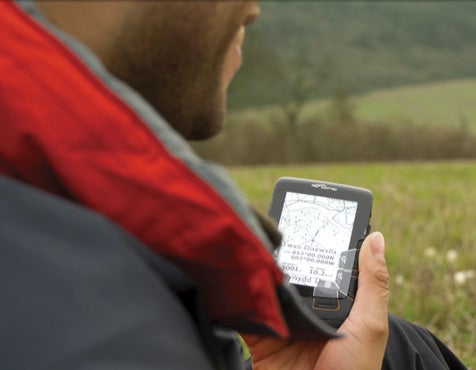
However these are minor niggles next to the Active 10’s biggest problem: and that’s cost. The device itself has a not-inconsiderable £300 price tag, but this is without any of the 50,000:1 or 25:000:1 maps preinstalled on it. There is a base map included as standard – essentially a road atlas-style map, but this provides none of the detail that makes it such a wonderful off-road navigational tool. The OS maps are, in fact, sold separately on SD card and plug directly into the Active 10, and they work out very expensive. Counties at 1:50,000 cost £30 each, at 1:25,000 they’re £50 each. National parks are available at £100 each and include both 1:25,000 and 1:50,000 mapping.
This is fine if you plan on using the device in one location, but the outdoors types who are serious enough to consider paying this much for a GPS will be walking in a variety of different locations, from the Peak District to the Grampians, the wilds of north Wales and everything in between. In fact the mapping only starts to look reasonable when you buy in bulk. The 1:50,000 maps of the whole of Great Britain can be had, for instance, for £199.99, which is quite a saving on buying every 1:50,000 map in paper format (there are 118 of these).
”’Verdict”’
Despite this, the Satmap Active 10 is, to my mind, the ultimate in recreational GPS devices. Its detailed mapping, thoughtful physical design and raft of features all come together in one supremely useable and useful device, albeit one with a few small niggles. But this does come with a major caveat. To get the ultimate in outdoors navigation, you also have to have very deep pockets.
Trusted Score
Score in detail
-
Usability 9
-
Features 9
-
Value 6

